7 Ways to Maximize Your Amazon Profit Margins

Trifon Tsevtkov
May 19, 2019

Most articles online talk about growing your Amazon revenue and that’s often the main success metric people use.
However, even if you generate a 7-figure or 8-figure revenue, you could end up making a loss.
So it goes without saying that managing your bottom line should take utmost priority in your Amazon business.
In this post, we’ll cover 7 ways to increase your sales margins so every new dollar you make in revenue boosts your overall profit.
Ready? Let’s go.
1. Use a credit card for purchasing stock
It’s normal to generate only a small profit or breaking even when you are just starting out with your Amazon business.
But as your operation grows, you will start to generate higher amounts of revenue and overall profits. With that, of course, your costs will also increase.
So it makes a lot of sense to use a credit card with cashback or some kind of reward system to purchase products from wholesalers and other expenses.
This can indirectly impact your bottom line as you get money back on your purchases. Alternatively, you can earn reward points to minimize other expenses such as business travel.
2. Create product bundles
One of the easiest and fastest ways to increase your profit margin is by using product bundles.
If you are not familiar with bundling, it is where you offer multiple products in one Amazon listing.
The main benefits of bundling are that the profit margins are increased and the competition for the Buy Box is reduced.
In most cases, a new listing will need to be created which means that you will be a solo seller for quite some time (until someone else notices that your bundle is popular and has access to the same products).
If set up correctly, you can be a solo seller for a bundle for as long as it remains profitable for you to keep on selling it.
In a way, bundles are similar to private label selling - only much easier and faster to create. And if some bundles don’t sell, you can always break them apart and sell as single units to get your money back (since you will be bundling popular products).
Let’s take a look at a product bundle so that you can see what we are talking about:

Sample product bundle
The screenshot above is a very basic example but it gives you an idea of what a bundle is all about.
It should be a group of products which complement each other. And as it is unlikely that another seller will have packaged together the same products, your bundle will be unique and will win the Buy Box.
In your eagerness to put a product bundle together, don't lose sight of the fact that everything in the bundle should be related and consist of products that are in demand.
A good way of finding related product ideas is to carry out a search for a product which has a decent Best Sellers Rank (BSR) and then look at the ‘frequently bought together’ products which can usually be found underneath the listing.
The body weight scales below are a good example:
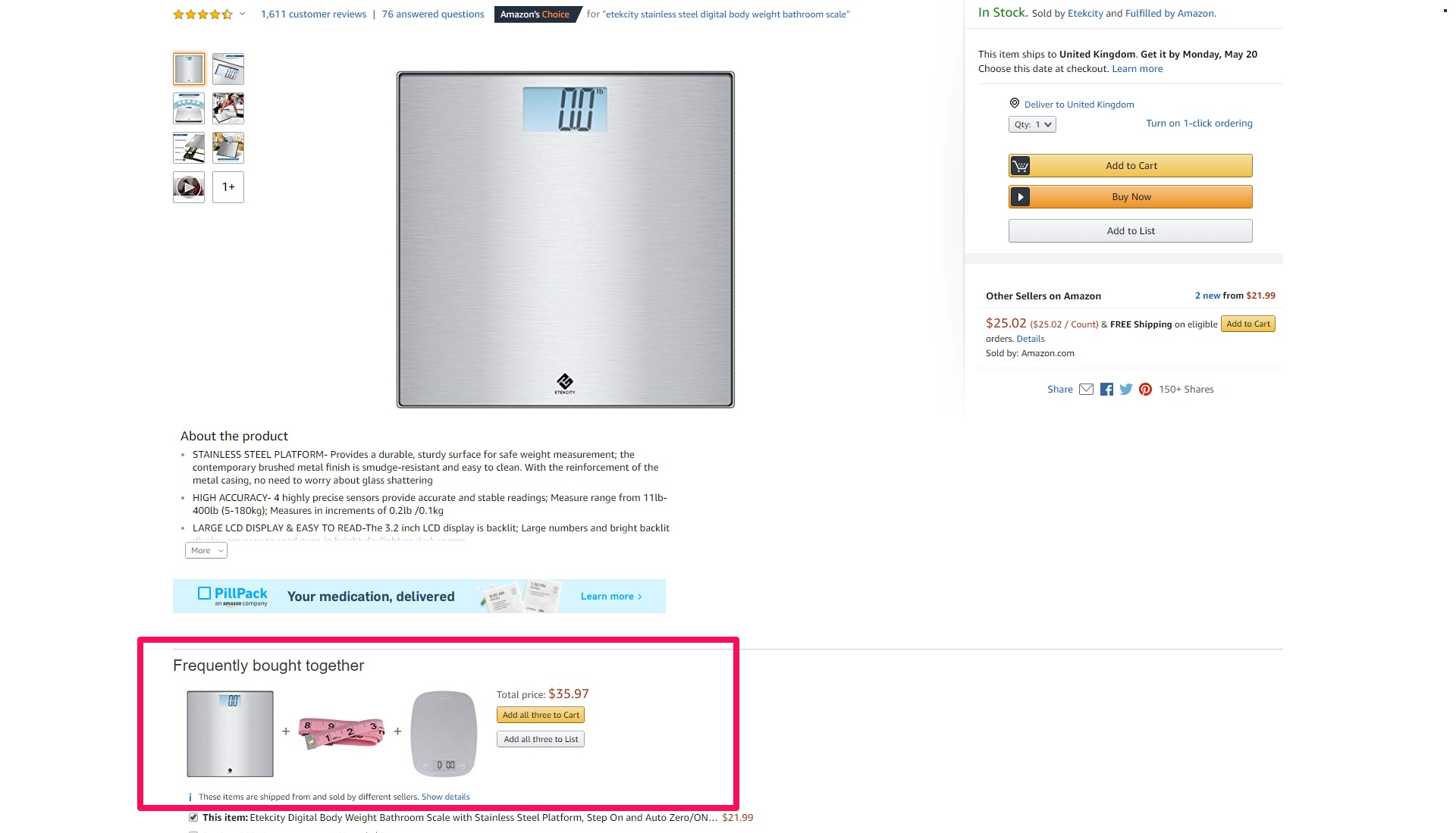
Sample of frequently bought together items
If you scroll further down the page you will see several other items which are listed under the heading ‘Customers who bought this item also bought’:
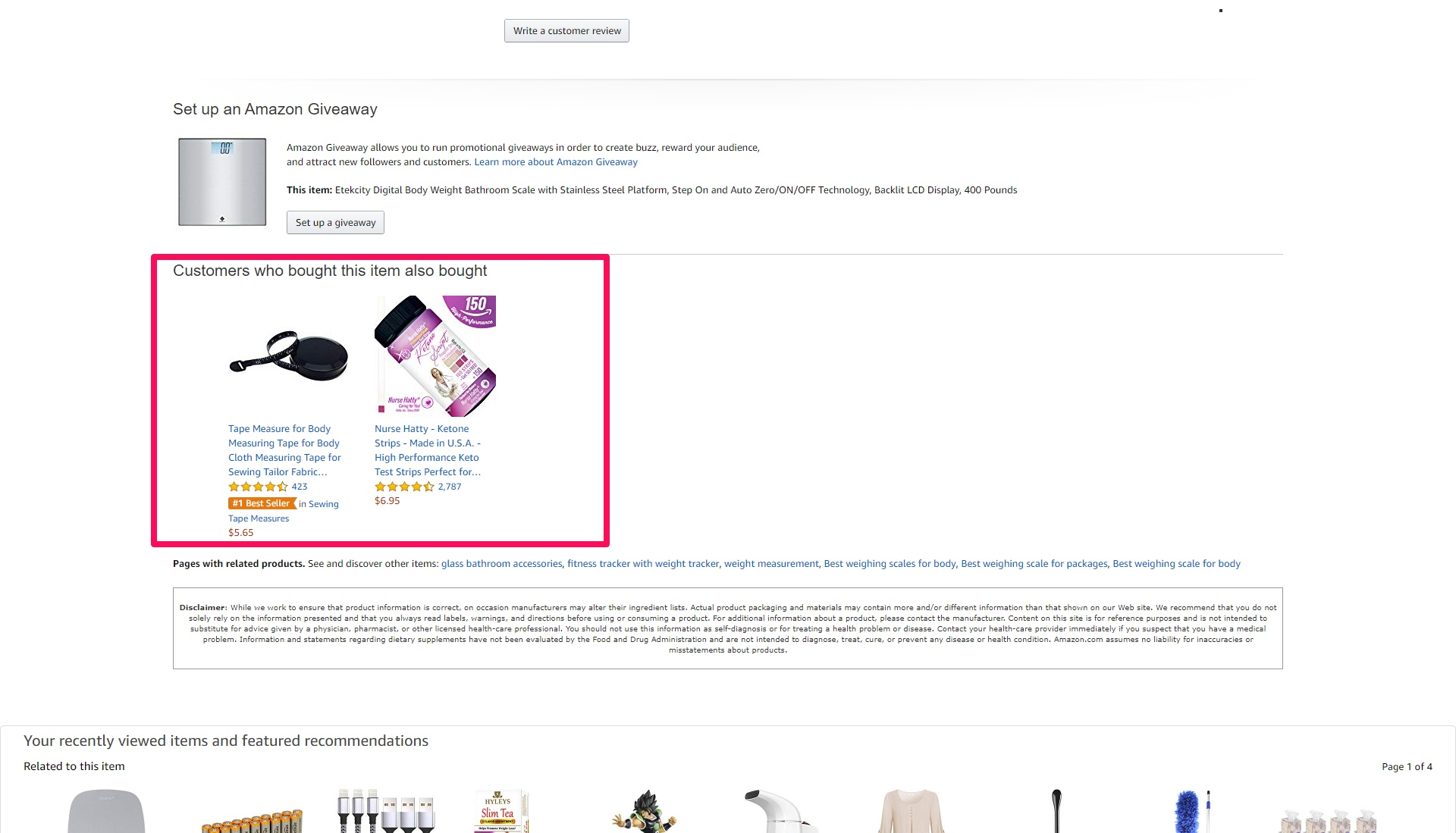
Sample of "Customers who bought this item also bought"
This is a goldmine of information which you could use to put together your own bundle.
There are a few other ideas which could help you in deciding which items to include in a bundle:
Visit your local store and note which products are displayed together.
Are there accessories which can be used to compliment the main product in the bundle?
Could your bundle be targeted at a particular holiday?
You really are only limited by your imagination and Amazon’s terms and conditions as to what kind of bundles you will put together.
And as already mentioned, going down this route is one of the easiest and fastest ways to start making a decent profit.
3. Track and react to price changes
When you negotiate with suppliers, they are likely to send you their catalogs which contain many thousands of products.
It is extremely difficult, not to mention time-consuming, to go through these lists to try and find profitable opportunities. You need to individually estimate the current Amazon sales price and compare with the cost in the product catalog. Then, you need to take into account all of Amazon’s fees and your own operating expenses to calculate any potential profit.
Luckily, there’s a way to analyze these product catalogs in bulk and therefore maximize your profits without wasting hours of your own time.
With the SupplySpy bulk profit analyzer, it is a matter of uploading the file from your supplier and you will be presented with the products which sell the best and have the highest profit margins.
Just sign up and go to the “My Suppliers” section. Then, add a supplier and import their product catalog:
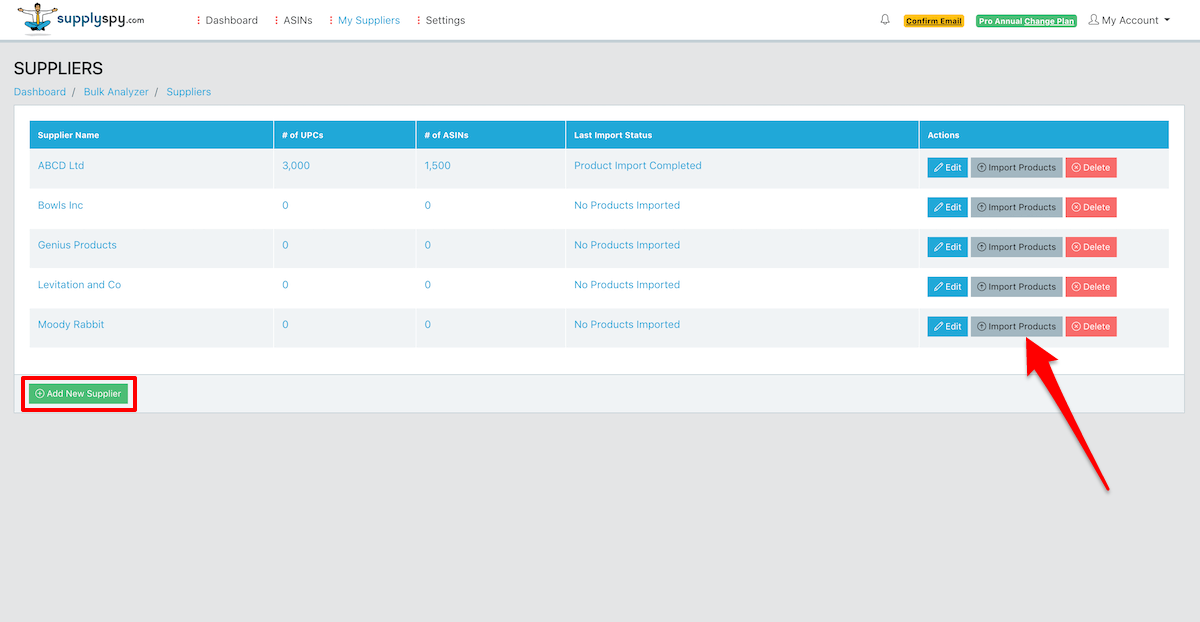
How to import supplier products file on SupplySpy
Once you have uploaded a supplier’s product file to SupplySpy with the sales rank and profit margin filters set, it is important that you check back on a daily basis to see if there have been any changes.
SupplySpy updates the price of products every day so products that weren’t profitable yesterday might show up as something to keep an eye on today.
You might be surprised by how often the prices do change, and there are various reasons for this.
It could be that a competitor has no stock left or they cannot continue selling at that price. No matter what the reason is, when SupplySpy informs you of the price change, you have a golden window in which to act as quickly as you can and maximize your Amazon profits.
The faster you can get your products sent to Amazon after the price change, the better because it will give you the opportunity to sell at a higher level for a longer period of time.
We have benefited from this many times in the past when we find a popular product where there has been a price increase. We normally ship around 100 units to Amazon as soon as possible and usually we will sell most of them at a price which gives us a great profit.
When the price drops we don't mind the few that we have left selling at break even, or even at a small loss. As long as the average profit is good, we are fine with that.
4. Take advantage of out of stock products
Some time spent on finding out of stock products can pay dividends and as you would probably expect, speed is of the essence.
You need to find products which are out of stock, but which have a good sales rank on Amazon.
If you are the fastest one to react and ship the product to Amazon when the stock next becomes available, you will be able to enjoy some solo selling time during which you will be able to make a good profit.
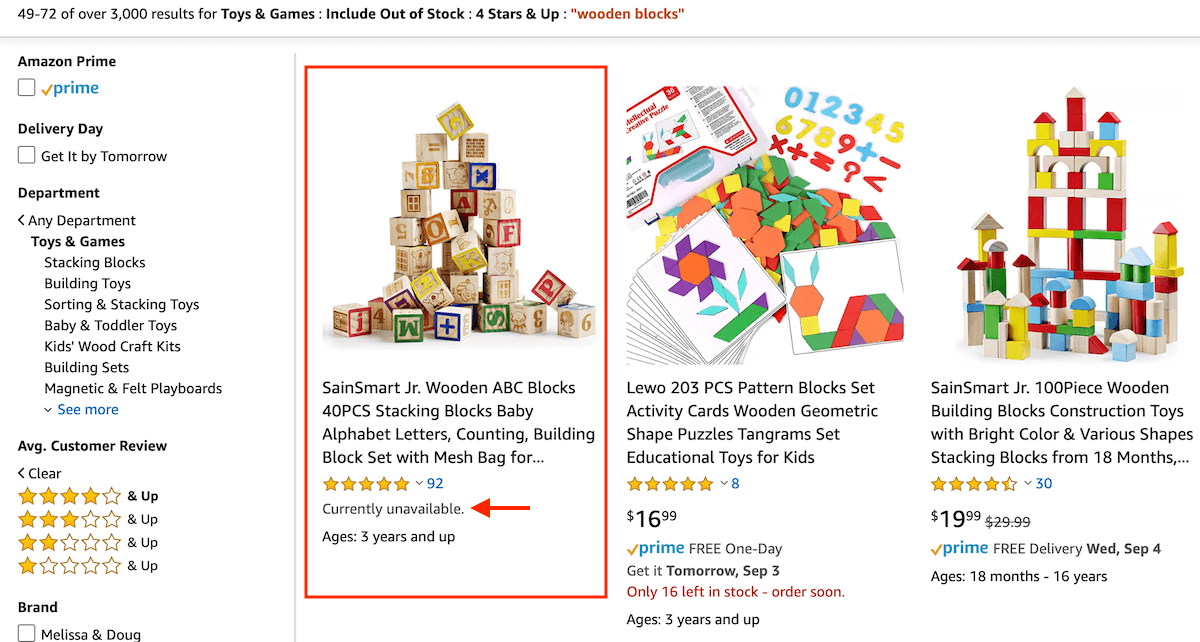
Select "Include out of stock" on Amazon and look for "Currently Unavailable" items
5. Buy all remaining units from a supplier
Another good way to get the edge over your competitors and to make a good profit is to keep an eye on how many remaining units your supplier has of a popular product.
Some suppliers show the amount of stock which is remaining of a product on their website and if you have noticed that there is a limited number of sellers of this particular product, consider buying everything that is left.
You should ask for a discount for taking the remaining stock off their hands but as long as it is a popular product, consider purchasing it anyway.
The chances are that your supplier may take some time to restock which will mean that when the remaining sellers run out of stock, you will be left as the solo seller and be able to enjoy the many benefits which go with that status.
6. Use repricer tools
You will not need to get involved with repricer tools if you only have a few products. But as soon as your inventory gets to a decent level, using a good repricer tool will pay dividends.
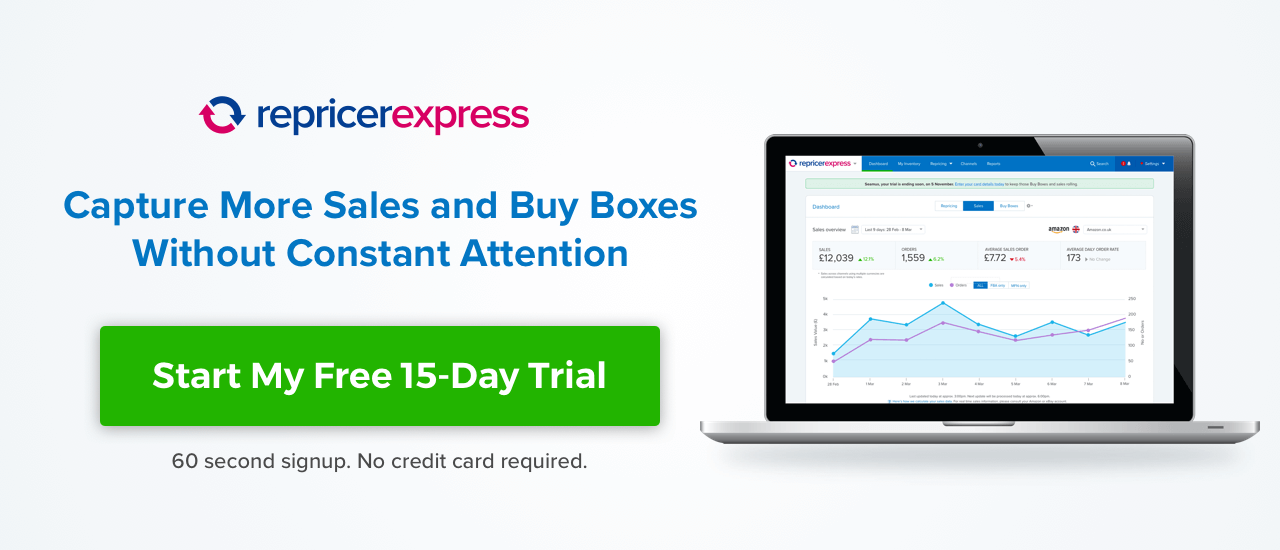
There are lots of repricer tools on the market.
Amazon offers a free one which can be found in your Seller Central account but the one we use is repricerexpress.com. They offer a free 15-day trial without the need to enter payment details so that will give you enough time to try it out for yourself.
If you are not familiar with how a repricing tool works, please let me explain. The repricing process begins when any one of the top 20 sellers for a particular item changes any of the following metrics with the price being the most common one (see list below).
Repricing Metrics:
-
price;
-
handling time;
-
shipping time;
-
Featured Merchant;
-
offer condition;
-
offer sub-condition;
-
deleted offer.
If there is a change in any of these metrics, a new price is calculated for the user of the repricing tool which will ensure that their products will remain well ranked and visible.
When setting up the repricing tool, the user will enter the minimum and the maximum price for each product. If the metrics change, the price of the user’s product will change automatically, ensuring that it is always meeting the optimum requirements.
So, as an example, your low-price competitor drops out and you are the only one who is selling at a cheap and unprofitable level. The repricer software that you are using will instantly raise the price which is based on your preset conditions.
Something that you should be aware of is that you should not attempt to beat your competitors by $0.01. Set your repricer to match the lowest Prime price and share the profit with your competitors. It seems that so many sellers think that they have discovered the Holy Grail when they first come across a repricing tool, so they set it up to beat their competitors' price by a cent.
The problem is that when more than one person is using this repricing tactic, and most of the serious sellers are, the actual price of the product will literally fall like a stone. Before you know it, the price will settle at a level which is extremely unprofitable and this can obviously lead to big losses, depending on how many units of this particular product you have in stock.
It is possible to set all prices to maximum levels for a set period of time with your repricing tools. The way we do this is that we set all prices to the maximum during the quietest time of the day which we have found to obviously be the middle of the night.
The reason for this is that it gives our competitors’ repricers the chance to follow our lead and raise their prices. Please let us give you an example.
Let's say there are three sellers of a product and one of those sellers pushed the price of a product right down. This results in all three of the sellers (who are using repricing software) now selling at the minimum price.
Now, let's say that the seller who originally pushed the price down has sold out, so there are now only two sellers left. As they had both set their prices to match the lowest Prime price, they would both be selling at the lowest prices as they are following each other.
If we were one of those sellers, our price would go up to the maximum overnight. As the other seller would probably have set his repricer to match the lowest FBA price, the price of the product would go up, resulting in higher profits for both of us.
7. Implement the sold-out strategy
This is a strategy that we have seen other sellers use on a regular basis but please note that we haven’t used this technique ourselves so do so at your own risk.
When you have been selling on Amazon for a little while, you will start to notice that a lot of popular products get sold out.
The idea is to find popular products (or brands with multiple products) that sell out from time to time. Buy those products when available (doesn’t matter if Amazon price is too low to make a profit at the moment), list for sale at a high price (FBM) and wait until all the products sell out on Amazon and your supplier and your competitors drop out.
You will often see that these products that are out of stock have a uniqueness about them and are not sold elsewhere.
You can check if a product is selling out on a regular basis using the historical data in ProfitGuru.
Simply enter a product’s ASIN in the Products section and click “Search” to find it’s details.
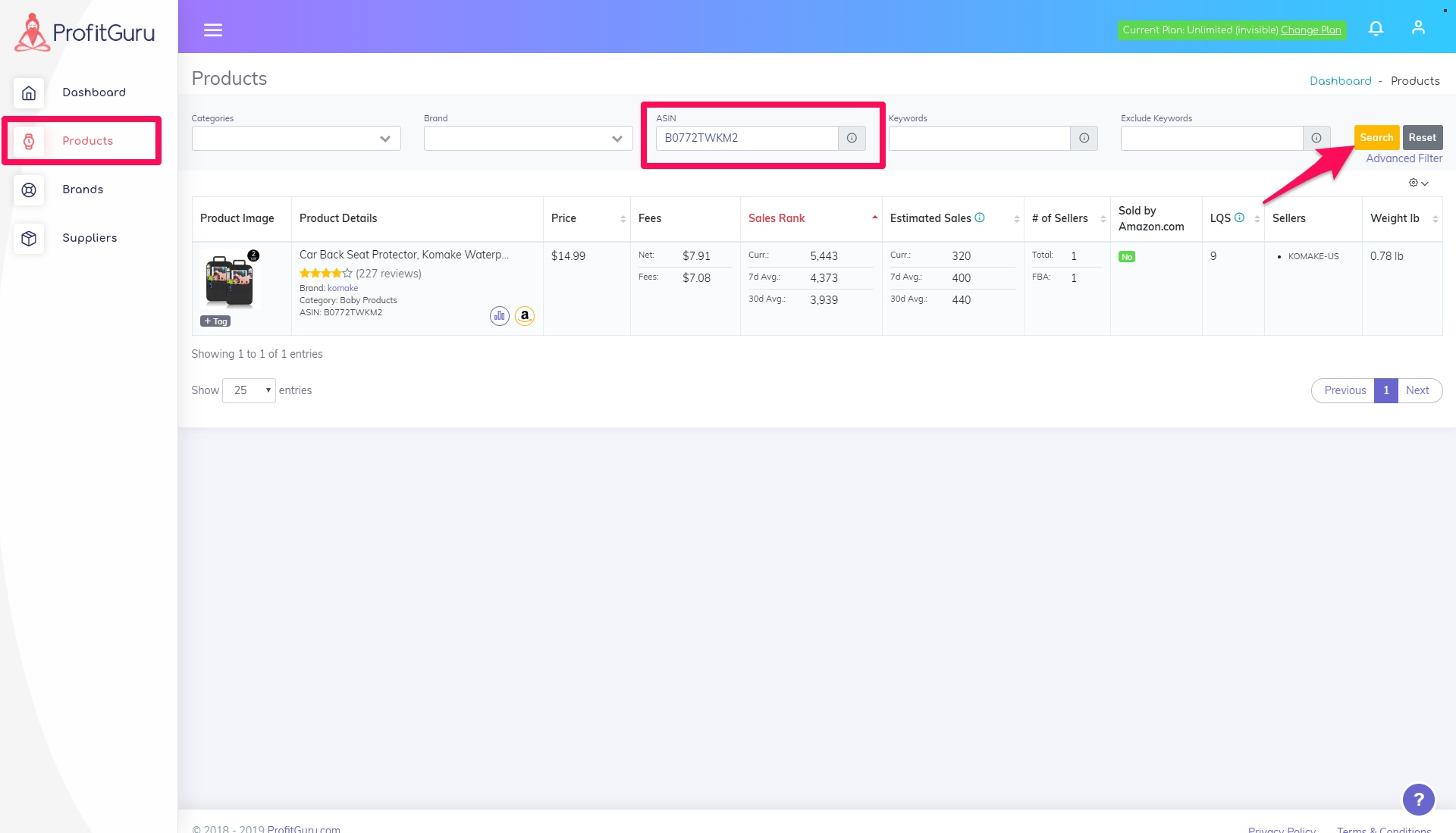
Search product by ASIN on Profitguru
Next, click on the Stats icon in the product summary to pull data about historical price, BSR and Amazon sellers.
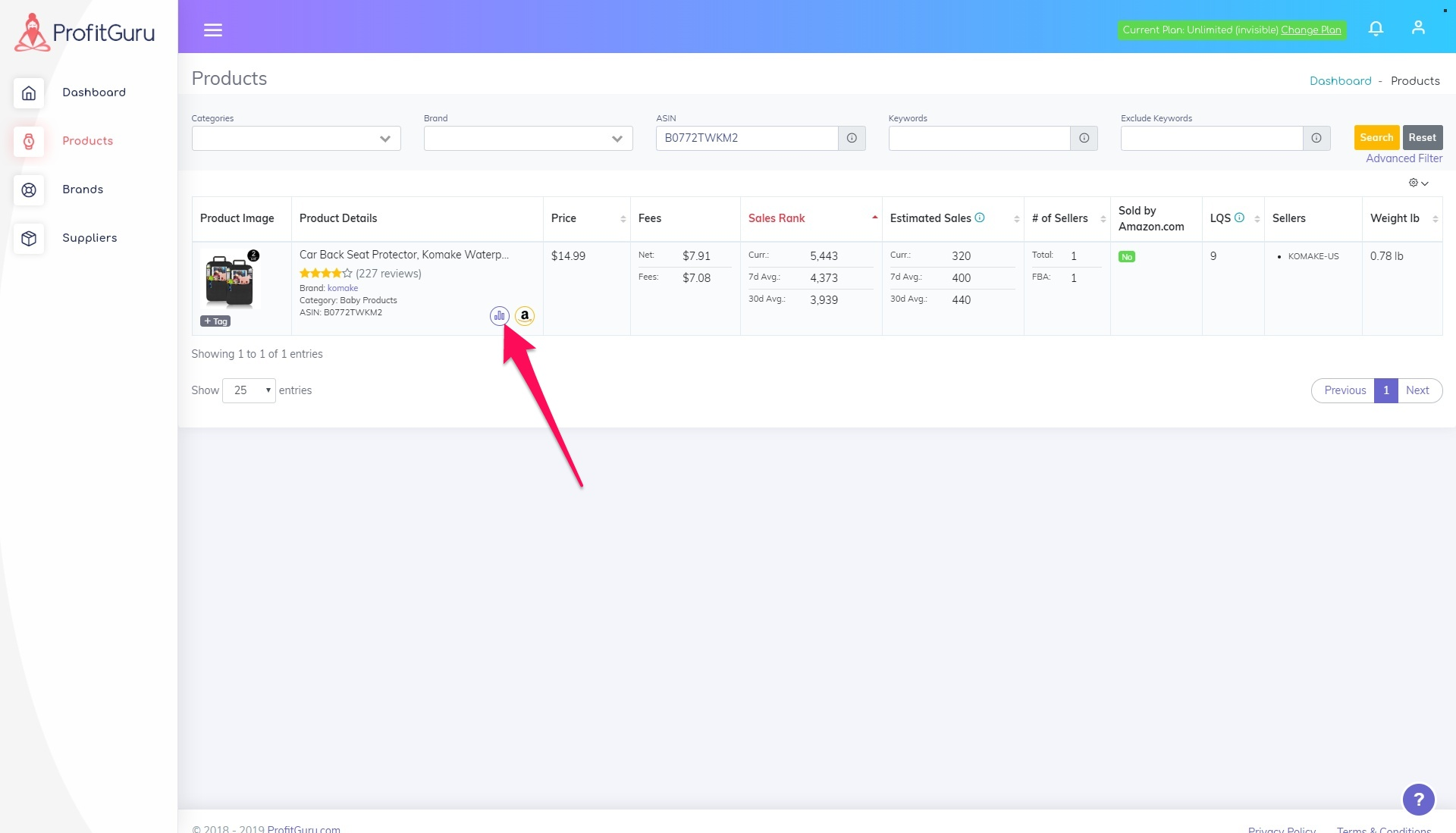
Click on View Historical Data
You will end up seeing a chart like this one:
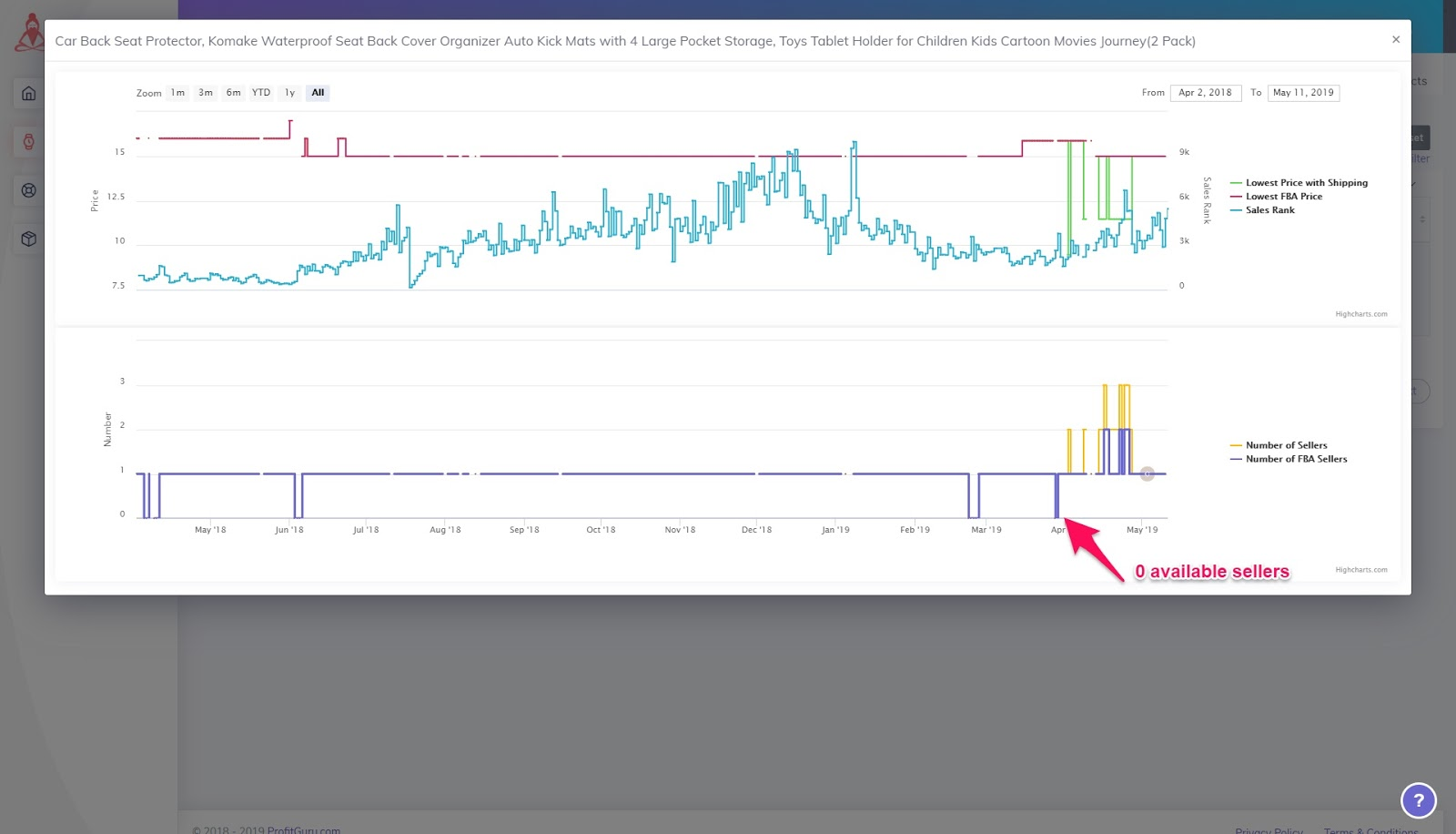
Product historical sales data chart
The screenshot above shows the sold-out strategy quite well.
This is a well-selling product that has sold out twice during the last 2 months. You can see the gaps in sellers and prices, plus the last gap follows by a higher price than regular (for a short time).
So, it's clear that the main seller has sold out and another seller has started to sell this at double the regular price with a very strong possibility that they have sold some items at that higher price.
So, after further investigation, if you see that a product sells out quite often, you just need to purchase one unit and set a very high price.
The next time that all other sellers sell out of the product, you will be the only seller left and be able to sell at a large profit margin.
Don’t come to the false conclusion that customers will not be prepared to pay such a high price because they will. You would be surprised how often the price is hardly even considered when a customer is desperate to buy something.
As long as you are selling a popular product and the price is not set at a ridiculous level, there is a good chance that it will sell.
Conclusion
In this post, we explored some of the best ways to maximize your Amazon seller profit margin.
First, we covered why using a credit card for your purchases can have an indirect impact on your bottom line and help you maximize resources.
Next, we looked at how and why you should build product bundles if you want to get better profit margins compared to selling items individually.
Our third tip covered how to use tools like SupplySpy to keep track of prices and quickly buy stock when there is a new opportunity to make a profit.
Similar to the tactic above, you can also track when certain products sell out and try to ship products to Amazon first so you become the only available supplier and win the Buy Box.
Our fifth point covered why you should look out for times when your supplier has limited stock. Buying everything that’s left prevents your competitors and supplier from selling the item so you become the only option and, for a time, sell the item at a higher price.
While not essential, using repricer tools can also help you automatically update your prices so you’re always at the optimal level for maximizing your profit.
Our final tip relates to finding products that frequently sell out and keep available stock to sell using FBM. The next time the item sells out, you can quickly ship it at a higher price as you’ll be the only available seller.
So there you have it - our pick of 7 ways to maximize your Amazon profit margins. We hope these will help you in growing your Amazon store not just in terms of revenue but also in profitability.
Need more guidance? Sign up for our free course on building an Amazon store from scratch for beginners.
On this page
The Free Email Course to KickStart Your Amazon Journey
Getting from an idea to your first few sales in 7 days

